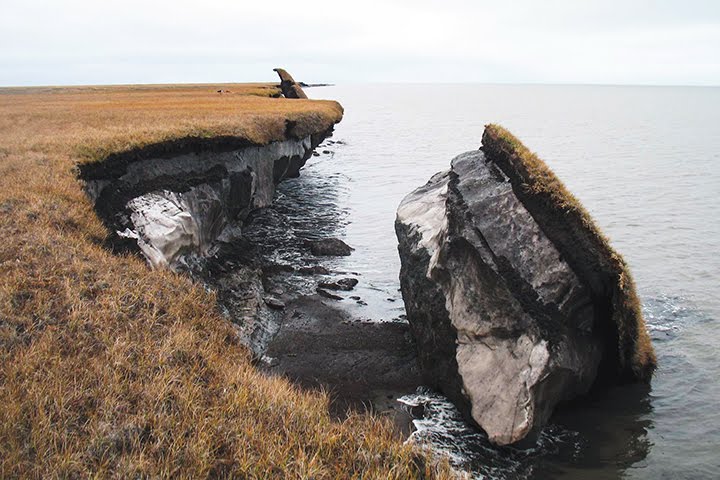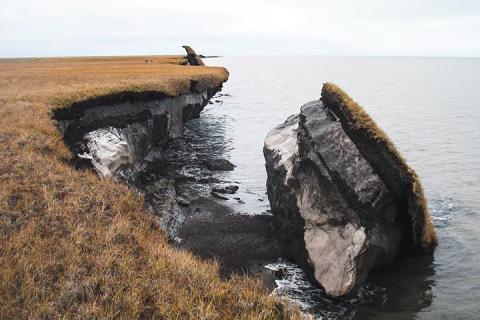Scientists estimate that five times as much carbon might be stored in frozen Arctic soils as have been emitted by all human activities since 1850. This worries people who study global warming. While emissions from permafrost currently account for less than 1 percent of global methane emissions, some researchers think that this could change in dramatic ways as the world warms and that carbon-rich frozen soil—permafrost—breaks down.
When permafrost gets warm enough, the soil thaws and microbial activity increases. Thawing also opens up new pathways for older stores of “geologic” methane, long-trapped by glaciers and soil layers, to leak. Both processes release extra methane into the atmosphere.
To better understand current methane emissions from permafrost—and to set a baseline for monitoring future changes—NASA scientists recently outfitted a C-23 Sherpa aircraft with sensors to measure carbon dioxide and methane. Through the Carbon in Arctic Reservoirs Vulnerability Experiment (CARVE), researchers flew over northern Alaska each summer for the past four years. “We know that permafrost soils are warming even faster than Arctic air temperatures—as much as 2.7 to 4.5 degrees in just the past 30 years,” said Charles Miller, the principal investigator for CARVE.
In the first year of flights (2012), the team found methane emissions to be around the expected norm for Alaska. Observations from 2013 and 2014 have not been fully analyzed and released yet, but preliminary assessments turned up some surprises. For instance, while methane emissions seemed to be at normal levels, the amount of carbon dioxide venting from the permafrost was high. The CARVE team also found evidence that Arctic regions emit methane long after surface soils freeze in the winter. Since most climate models assume virtually no Arctic methane emissions in the winter, key assumptions will need an update.
Although the CARVE campaign ended in 2015, Miller will continue the measurements through NASA’s Arctic-Boreal Vulnerability Experiment (ABOVE), which began in 2015.
Read the full article Arctic Permafrost from NASA's Earth Observatory.
Browse CARVE data sets at ORNL DAAC
Browse ABoVE data sets at ORNL DAAC



